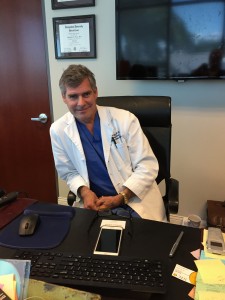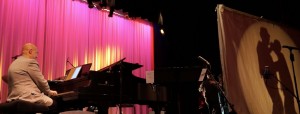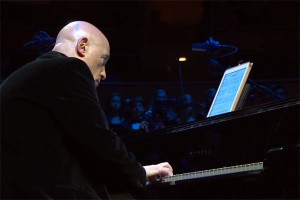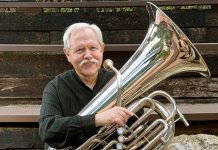
The human brain is a complex of tissue and nerves, fluids and electrical energies, that when working in perfect harmony creates the kind of thought and physicality that allows us to be human.
When this synergy deconstructs, through disease or accident, the human machine falters.
Fortunately, medicine is more than ever a marriage of traditional care with human caring: It is inextricably coupled with a vast choice of computer-driven technologies that can see into the brain itself, and or communicate all the way down to the molecular level in order to re-educate cells to behave themselves.
Traditionally, surgery and (much more recently) pharmaceuticals have been used to treat those suffering from such neural disabilities as Alzheimer’s, Parkinson’s, Bi-polar disorder, schizophrenia and depression.
Many treatments in use today were discovered by accident. However, over the centuries, humans recognized that music had almost magical effects on human behavior, although little scientific work has been conducted to learn why.
To that end, classically trained pianist Christopher Duma, MD, a brain surgeon at Hoag, is now composing new studies with technological accompaniment to turn music into a viable medicine to aid neurologically afflicted patients.
This all began when interviewing the husband of a woman suffering debilitating Parkinson’s; she literally couldn’t  walk, even though the two of them were lifelong ballroom dancers.
walk, even though the two of them were lifelong ballroom dancers.
But when a certain song played, the husband said, his wife got up and danced as fluidly as she had before – as if a witch’s spell had been cast aside for the duration of the piece.
“This got me really intrigued about the use of music for some patients’ ailments,” Duma recalled.
To help fund his research, Duma and his partner, former David Bowie rock keyboardist and composer Mike Garson, created a nonprofit called The Music-Heals Project. Garson’s impetus stemmed from the fact that his grandson was autistic, and that the youngster responded well to music.
“The object of this project is to figure out what it is that makes people move better, function better, and have less pain – just by using music,” Duma said.

As a classic apothecary would mix various pharmaceuticals, composer Garson blended approximately 30 therapeutic songs that might have salving effects on the mind.
From those, the doc and the keyboardist selected a dozen that featured a classic mix of contemporary rhythms, beats and sounds with which to test the music’s effect on patients.
“The songs were soothing, somewhat akin to elevator music,” Duma suggested.
After all, elevator music was installed to help vertically challenged and claustrophobic passengers relax for the briefest times.
Garson’s songs ultimately were packaged as the “Symphonic Suite for Healing,” and performed a year ago to a rapt crowd at Segerstrom Center. He received a trio of standing ovations and rave reviews. Proceeds from the charity performance grossed a respectable $300,000, which barely paid for the cost of the hall and the performers. Never the less, it still provided some seed money along with additional encouragement to further the research.
As Duma’s research pressed on, he learned that “music could be used like a drug.” With testing, particular musical selections would be determined to have a beneficial effect on a patient. It was a matter of saying, “Listen to this song three times a day and call me…”
Of course, “we don’t yet know if the music will have a ‘wearing off phenomenon’ like a drug,” Duma admitted.
Music is both active and passive, and works for both mental and movement disorders. In some cases, patients’ health improves when they listen and play music. But each case is individual, “we just have to tailor their activity,” Duma apprised.
Duma believes that continual exposure to music can alter a person’s DNA. Initial epigenetic research is underway to expose children with autism to music in the hopes that over time autism will go away. He believes that music therapy also might work with PTSD.
“Think of the potential in the entire VA system,” he enthused.
Because Duma believes so strongly in the infusion of music to improve health, he has invented a micro-ear-bud delivery system that will play music at a subaudible, or almost subconscious, level, thereby helping to heal the brain or at least minimize the effects of brain disease.
When people hear music, it literally hits every part of the brain simultaneously, dealing with everything from emotion to reason to muscular activity.
So when the brain is working as designed, how can one have a bad day?
The answer should be music to everyone’s ears.




